
You don’t need to overhaul your entire lifestyle to make a real environmental impact. Simple changes like switching to LED bulbs can save you $55 per bulb while reducing energy consumption, and fixing that dripping faucet takes just minutes but prevents gallons of daily waste. These small adjustments add up quickly, creating meaningful change for both your wallet and the planet. Ready to discover which effortless swaps will transform your home into an eco-friendly haven?
Switch to LED Light Bulbs Throughout Your Home
One of the simplest changes you can make is swapping out your old incandescent bulbs for LED alternatives. You’ll immediately gain control over your energy costs while making a meaningful environmental impact. LED bulbs are incredibly energy efficient, using 75% less electricity than traditional incandescent bulbs.
The cost savings add up quickly! A single LED bulb can save you $55 in electricity costs over its lifetime. When you multiply that across every room in your home, you’re looking at hundreds of dollars back in your pocket. Plus, LEDs last 25 times longer, meaning fewer trips to the store and less waste.
Making this switch puts you in the driver’s seat of your home’s energy consumption while contributing to a greener planet. For even greater control over your energy usage, consider installing dimmer switches alongside your new LED bulbs to adjust brightness based on your activities and further reduce electricity consumption.
Reduce Water Waste With Simple Bathroom Fixes

After tackling your home’s energy consumption, your bathroom offers another fantastic opportunity to go green and save money. You’ll discover that small changes create powerful results for both your wallet and the environment.
Start by taking control of your water usage. Install low flow fixtures like showerheads and faucet aerators to cut consumption by 30-50%. These upgrades typically cost $10-30 but save hundreds annually.
| Fix | Cost | Annual Savings |
|---|---|---|
| Low-flow showerhead | $15-25 | $75-150 |
| Faucet aerators | $5-10 | $35-60 |
| Toilet leak repair | $10-20 | $200-400 |
Check for leaks regularly by adding food coloring to your toilet tank. If color appears in the bowl without flushing, you’ve found a costly leak that’s draining your resources.
Beyond conservation, staying properly hydrated while implementing these water-saving measures supports your skin’s natural radiance and overall health as your body efficiently uses the clean water you’re preserving.
Start Composting Kitchen Scraps and Yard Waste

Composting turns your kitchen scraps and yard waste into nutrient-rich soil that’ll make your garden thrive! You’ll need to pick the right composting method for your space, learn which materials work best, and keep your pile healthy with regular maintenance.
It’s easier than you think, and you’ll reduce household waste by up to 30% while creating free fertilizer. Once you have rich compost ready, you can use it to grow your own herbs on a windowsill with small pots and seeds for an incredibly budget-friendly indoor garden.
Choose Your Compost Method
While deciding which composting method works best for your space might seem overwhelming, you’ll find that each option has clear benefits depending on your living situation. Tumbler bins cost $100-300 but speed up decomposition to 6-8 weeks through easy turning. Traditional bins work great for larger yards and handle bigger volumes at $50-150.
For apartments, countertop bins manage small amounts of scraps before transferring outdoors.
Worm composting transforms your kitchen waste into rich fertilizer using red wigglers. You’ll need just 2 square feet of space and $40-80 for supplies. The composting worm options include red wigglers and European nightcrawlers, both excellent decomposers.
Different compost bin types suit various budgets and spaces, so you can start small and expand your system as you gain confidence!
What Materials to Compost
Getting your hands dirty with composting starts by knowing which materials break down into rich soil amendment. You’ll want to master the balance of “greens” and “browns” that create successful compost bin materials.
Your greens provide nitrogen and include:
- Vegetable peels, fruit scraps, and coffee grounds
- Fresh grass clippings and plant trimmings
- Eggshells and tea bags (remove staples first)
- Fresh leaves and garden debris
Browns supply carbon for your compost pile components. Think dried leaves, newspaper, cardboard, and wood chips. You’ll achieve ideal decomposition by maintaining a 3:1 ratio of browns to greens.
Avoid meat, dairy, oils, and pet waste – these attract pests and create odors. Stick to plant-based kitchen scraps and yard waste, and you’ll transform waste into garden gold within months!
Maintain Your Compost Pile
Once you’ve gathered your materials, maintaining your compost pile becomes a simple routine that transforms scraps into soil gold. You’ll want to turn your pile every 2-3 weeks to keep oxygen flowing through the decomposing matter. This prevents nasty odors and speeds up the process considerably.
Monitor compost moisture by grabbing a handful – it should feel like a wrung-out sponge. Too dry? Add water or fresh kitchen scraps. Too wet? Mix in dry leaves or shredded paper to balance things out.
Add compost activators like coffee grounds or grass clippings to boost decomposition. These nitrogen-rich materials fuel the microorganisms doing the heavy lifting. Within 3-6 months, you’ll have rich, dark compost that’ll make your garden thrive!
Choose Reusable Bags for All Your Shopping Trips
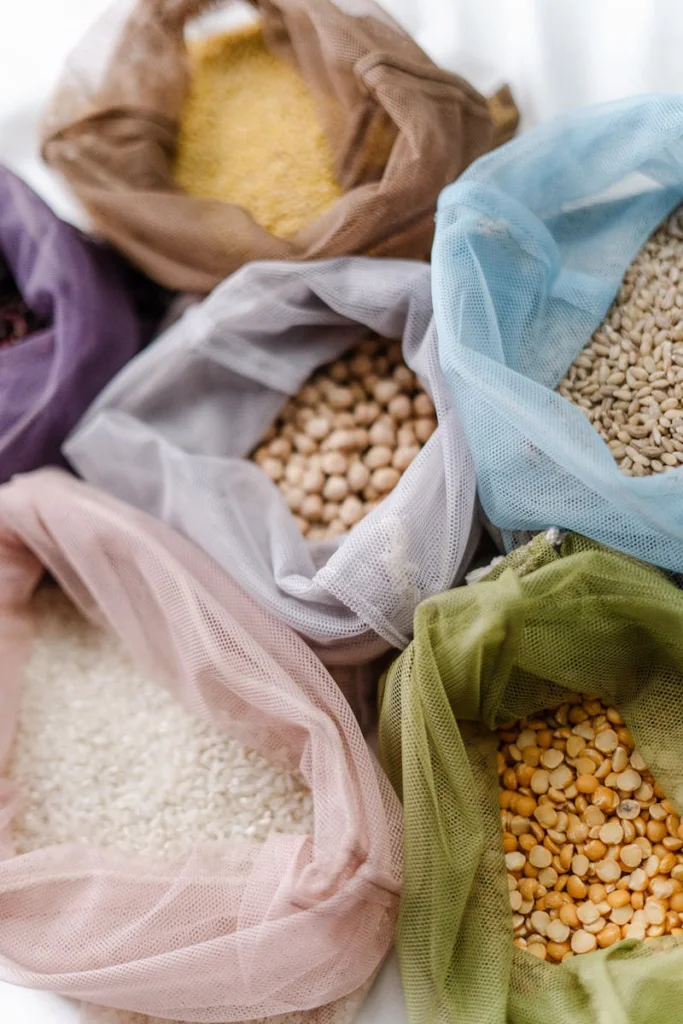
Since plastic bags take up to 1,000 years to decompose, switching to reusable shopping bags is one of the simplest ways you can reduce your environmental impact. When you carry reusable totes, you’re taking control of your carbon footprint and making a powerful statement about your values.
Making this switch helps you avoid single use plastic bags while saving money on bag fees. Here’s how to maximize your impact:
- Keep bags in your car, purse, and by your front door
- Choose sturdy canvas or recycled material options
- Wash bags regularly to maintain hygiene
- Use different bags for groceries, clothes, and other items
You’ll prevent hundreds of plastic bags from entering landfills annually. Start small with two or three bags, then expand your collection as the habit strengthens. Just like choosing seasonal wallpapers can refresh your workspace, incorporating eco-friendly habits into your daily routine brings positive change to both your mindset and the environment.
Unplug Electronics When Not in Use
Although many electronics appear completely off, they continue drawing power when plugged in, costing you money and wasting energy. This phantom power drain can add $100 to $200 yearly to your electric bill! You can take control by developing simple unplugging habits that’ll boost your savings and reduce your environmental impact.
Start by unplugging appliances when not in use, including coffee makers, phone chargers, and gaming consoles. These devices consume energy even in standby mode. Turn off lights when leaving a room – it’s the easiest habit to master! Focus on high-energy items like televisions, computers, and kitchen appliances first.
Create power strips for easy management. You’ll flip one switch to cut power to multiple devices instantly. Small changes create big results when you stay consistent! Consider using app automation tools to schedule smart plugs and devices, making it even easier to manage your home’s energy consumption without manual effort.
Replace Single-Use Items With Durable Alternatives
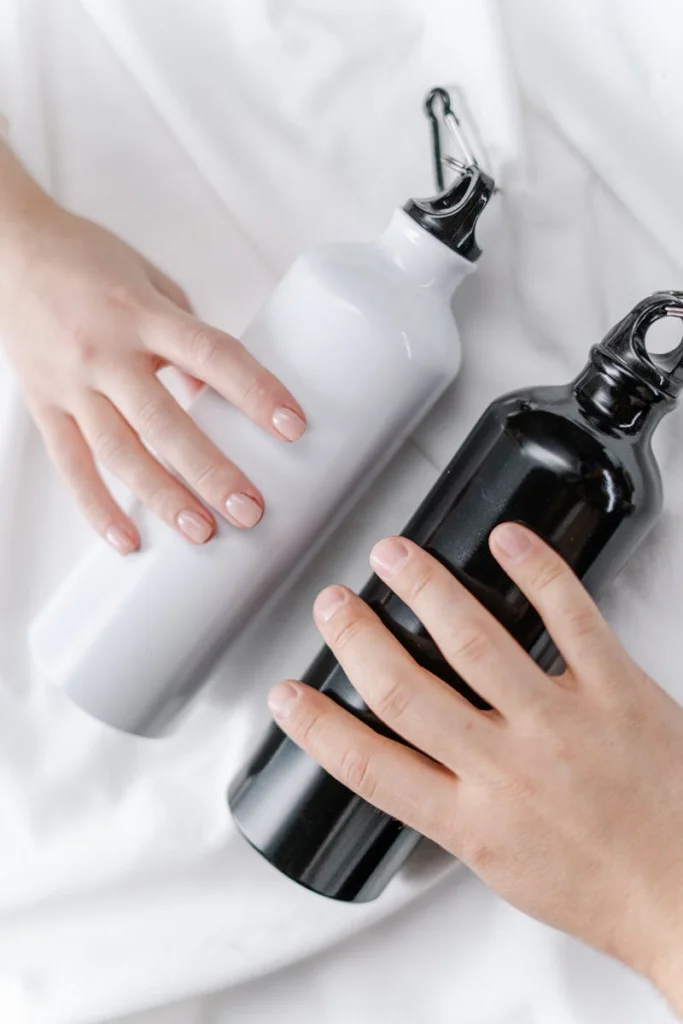
You can make a big difference by swapping throwaway items for ones you’ll use again and again. Start with simple switches like carrying a reusable water bottle instead of buying plastic ones, or bringing cloth shopping bags to the store.
These small changes will save you money over time while keeping tons of waste out of landfills! Consider repurposing unused items around your home through decluttering projects that help you discover creative ways to give old possessions new life.
Reusable Water Bottles
When you switch from disposable water bottles to a reusable one, you’ll save hundreds of dollars each year while protecting the environment. The average person spends $300 annually on bottled water, but refillable water bottles cost just $15-30 upfront. You’ll recoup your investment within weeks!
Smart choices multiply your impact:
- Stainless steel bottles keep drinks cold for 24 hours and hot for 12 hours
- Glass containers preserve taste without chemical leaching concerns
- BPA-free plastic options offer lightweight portability for active lifestyles
- Water filtration systems at home guarantee clean, great-tasting refills
You’re taking control of both your budget and environmental footprint. Most refillable bottles last years with proper care, eliminating thousands of plastic bottles from landfills. Start today—your wallet and the planet will thank you!
Cloth Shopping Bags
Plastic shopping bags pile up in your kitchen drawers while contributing to massive environmental waste—but switching to cloth bags solves both problems instantly. You’ll gain control over clutter while making a powerful environmental impact every time you shop.
Invest in sturdy canvas or cotton bags that hold 2-3 times more groceries than flimsy plastic ones. They won’t tear under heavy loads, and you’ll look organized and prepared at checkout. Don’t forget reusable produce bags for fruits and vegetables—they’re lightweight mesh alternatives that eliminate those thin plastic sleeves.
Keep bags in your car, purse, or by your front door so you’ll never forget them. This simple switch helps you reduce plastic waste considerably while saving stores money on disposable bags. You’re taking charge of positive change!
Optimize Your Home’s Heating and Cooling Settings
Most households can slash their energy bills by 10-20% just by adjusting their thermostat settings! You’ll gain complete control over your home’s energy consumption while keeping more money in your pocket.
Set temperatures strategically – 68°F in winter, 78°F in summer for ideal savings. Adjust thermostat daily when leaving for work or sleeping to reduce waste. Seal air leaks around home using weatherstripping on doors and caulk around windows. Use ceiling fans to circulate air and feel 3-4 degrees cooler without changing settings.
These simple changes put you in command of your energy costs. You don’t need expensive equipment or professional help. Start with one adjustment today, and you’ll see results on your next utility bill! Consider incorporating these energy savings into your monthly budget by following the 50/30/20 rule – allocate the money you save on utilities toward your savings goals or debt repayment.
Buy Local and Seasonal Produce When Possible
Supporting your local farmers while eating fresher, more nutritious food creates a win-win situation for everyone involved. When you buy seasonal produce from nearby farms, you’re reducing transportation costs and carbon emissions while getting peak-flavor fruits and vegetables.
| Season | Local Options | Environmental Benefit |
|---|---|---|
| Spring | Asparagus, lettuce, peas | Reduced shipping distances |
| Summer | Tomatoes, corn, berries | Lower fuel consumption |
| Fall | Apples, pumpkins, squash | Minimal refrigeration needed |
| Winter | Root vegetables, citrus | Support local economy |
You’ll discover that seasonal eating costs less than imported alternatives. Visit farmers markets or join a community-supported agriculture program to support local farmers directly. Your wallet and taste buds will thank you for choosing produce that’s traveled miles instead of thousands! This approach to eating aligns with the growing consumer preference for sustainable products and ethical sourcing practices.
Use Natural Cleaning Products You Can Make at Home
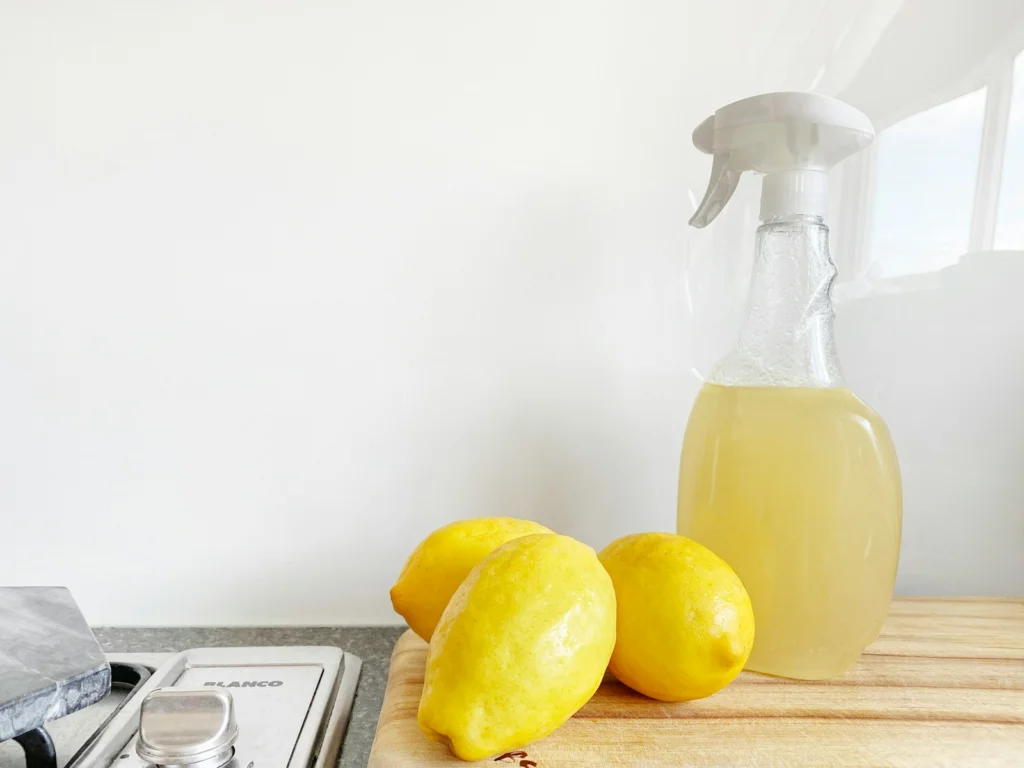
You can easily create effective cleaning products using basic kitchen ingredients you probably already have at home. These simple recipe combinations work just as well as store-bought cleaners and cost only pennies per batch!
With proper storage techniques, your homemade cleaners will stay fresh for weeks while keeping your family safe from harsh chemicals. To make this routine even more manageable, keep your homemade cleaning supplies in every room and try the 10-minute tidy approach – set a timer, focus only on visible surfaces, and stop when it rings.
Essential Ingredient Kitchen Staples
When you’re ready to ditch harsh chemical cleaners, your kitchen pantry already holds powerful natural alternatives that’ll save you money and protect your family’s health. You don’t need expensive products when basic ingredients deliver superior results.
These four powerhouse ingredients transform your cleaning routine:
- White vinegar – Cuts through grease and removes soap scum effortlessly
- Baking soda – Scrubs away stains and neutralizes odors naturally
- Lemon juice – Disinfects surfaces while leaving fresh citrus scents
- Castile soap – Provides gentle yet effective cleaning power
You’ll spend under $10 for months of cleaning supplies! Store these essentials in sustainable food storage containers, and you can even repurpose empty jars from homemade spice blends. This simple switch puts cleaning control back in your hands.
Simple Recipe Combinations
Mixing these pantry staples creates cleaning solutions that outperform store-bought products at a fraction of the cost. You’ll save $200+ annually while eliminating harsh chemicals from your home environment.
Start with baking soda and white vinegar for an all-purpose cleaner that tackles grease, grime, and odors. Add lemon juice for extra cutting power on stubborn stains. This combination works perfectly during your weekly pantry organization sessions – clean shelves while you reorganize!
Create a glass cleaner using equal parts water and vinegar with a drop of dish soap. Store these homemade solutions in labeled containers for easy access during meal prepping cleanup. You’ll streamline your kitchen routine while protecting your family’s health. These simple recipes prove that green living doesn’t require complicated formulas or expensive ingredients from specialty stores.
Safe Storage Tips
Proper storage keeps your homemade cleaning solutions effective and safe for months. You’ll maximize your green cleaning investment by using secure storage containers that protect your solutions from contamination and degradation.
Smart storage practices guarantee your natural cleaners maintain their power and potency:
- Label everything – Include ingredients and creation dates for easy identification
- Choose dark glass bottles – They protect light-sensitive ingredients like essential oils
- Store in cool, dry places – Heat and humidity reduce cleaning effectiveness
- Follow refrigerator storage tips – Keep certain mixtures cold to extend shelf life
You’re taking control of your home’s cleanliness while protecting your family’s health. Most homemade cleaners last 2-3 months when stored properly, saving you money and reducing packaging waste!
Take Shorter Showers to Conserve Water and Energy
Although you mightn’t realize it, your daily shower routine offers one of the simplest ways to make a real environmental impact. You can slash your water and energy bills while protecting the planet by cutting just five minutes from your shower time.
Install a shower timer to track your progress and aim for showers under five minutes. This simple change saves 12.5 gallons of water per shower! You’ll also reduce energy costs since heating water accounts for 18% of your home’s energy use.
Try these water conservation tips: turn off water while shampooing, use a low-flow showerhead, and play energizing music to keep short showers enjoyable. You’ll save approximately $70 annually on utility bills while making a meaningful difference for future generations.
For an extra eco-friendly boost, consider taking your shower in the morning when natural light exposure can help energize you for the day ahead without relying on artificial lighting.
Repurpose Glass Jars and Containers for Storage
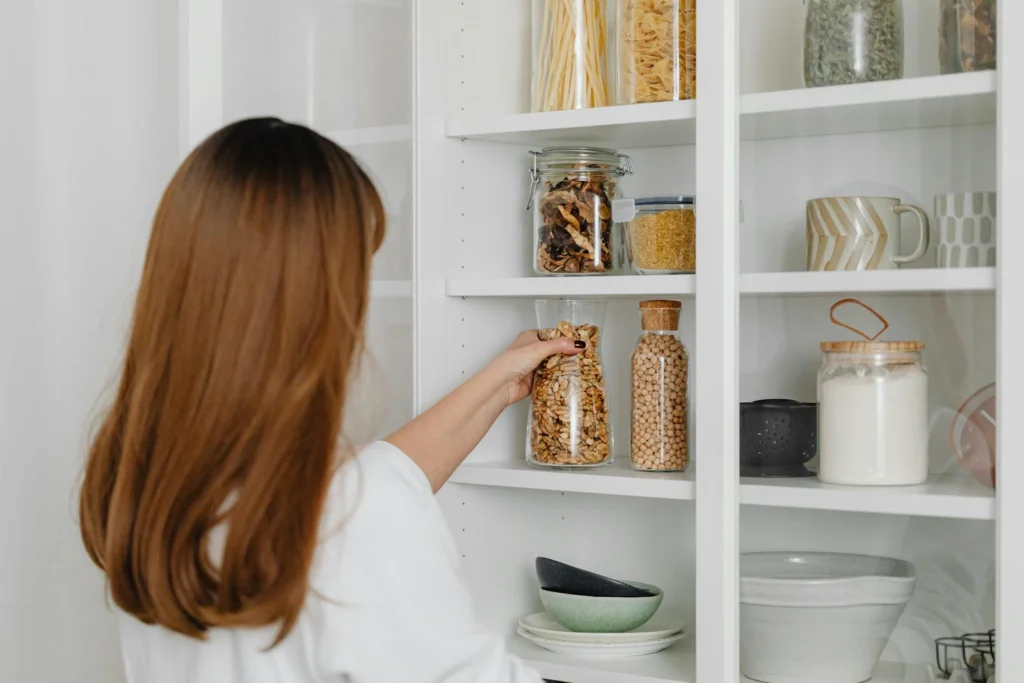
Creativity meets sustainability when you transform empty glass jars into useful storage solutions around your home. You’ll reduce waste while creating functional organization systems that cost nothing extra. Glass containers outlast plastic alternatives and won’t absorb odors or stains.
Maximize your repurposing potential with these smart approaches:
- Kitchen essentials: Store spices, grains, and leftovers using reusable storage lids for airtight freshness
- Bathroom organization: Hold cotton balls, hair ties, and small toiletries in clear, accessible containers
- Craft supplies: Organize buttons, beads, and small hardware pieces for easy project access
- Decorative container ideas: Add labels, twine, or paint to match your home’s aesthetic
You’ll discover that mason jars and sauce containers work perfectly for this green lifestyle shift. Start collecting your empties today!
Walk, Bike, or Use Public Transportation More Often
While organizing your home reduces waste indoors, your transportation choices make an even bigger impact on the planet’s health. You’ll slash your carbon footprint and save serious money by choosing greener transportation options.
Start small by making one trip per week car-free. Walk to work if you live within two miles, or bike to the grocery store for quick errands. These simple switches can save you $200-400 monthly on gas and parking fees!
Public transportation cuts your emissions by 45% compared to driving alone. You’ll also gain productive time to read, work, or relax during your commute. Plus, regular walking and biking boost your fitness levels naturally.
Challenge yourself to go car-free one day each week. You’ll discover your neighborhood differently and feel empowered knowing you’re protecting the environment.
Choose Digital Receipts and Bills Over Paper
You can make a significant environmental impact by choosing digital receipts and bills instead of paper ones. This simple switch reduces paper waste while helping you organize your financial documents more efficiently online.
Setting up auto-pay options for your digital bills also saves time and guarantees you never miss a payment!
Reduce Paper Waste
Since most households receive dozens of paper bills and receipts each month, switching to digital alternatives can dramatically cut your paper consumption. You’ll take control of your environmental impact while streamlining your finances.
Smart strategies to reduce office paper usage and digitize important documents include:
- Set up automatic email notifications for utility bills, credit cards, and bank statements
- Use smartphone apps to scan and store receipts digitally instead of keeping paper copies
- Choose online banking and mobile payment options that eliminate paper checks entirely
- Create cloud-based filing systems for tax documents, warranties, and important records
You’ll save money on filing supplies and postage while protecting sensitive information with password security. Digital storage means you can access your documents anywhere, anytime. This simple switch puts you in command of both your environmental footprint and personal organization!
Organize Digital Documents
Organization becomes effortless when you create a systematic approach to managing your digital documents. You’ll eliminate paper clutter while gaining instant access to important files from anywhere.
Start by choosing digital receipts at checkout instead of printed ones – most retailers offer this option through email or apps.
Set up folders on your computer or cloud storage for categories like taxes, insurance, and utilities. When you organize files digitally, you’ll save time searching through stacks of paper later. Create a digital storage system that works for your lifestyle, whether that’s monthly folders or topic-based organization.
Switch your bills to electronic delivery and use your bank’s online bill pay feature. You’ll reduce mail volume by 80% while keeping everything searchable and backed up automatically.
Set Auto-Pay Options
When you automate your bill payments, you’ll never worry about late fees again while substantially reducing paper waste. Setting up digital payments puts you in control while protecting the environment from unnecessary paper consumption.
When you set up paperless billing, you’re eliminating tons of mail clutter and helping forests thrive. Most companies make the switch incredibly simple through their websites or apps.
Take five minutes to review utility company green options too – many offer renewable energy programs alongside paperless statements.
- Eliminate late fees – Save $25-50 monthly on penalty charges
- Reduce mail volume – Cut household paper waste by 40%
- Streamline finances – Spend less time managing bills each month
- Support sustainability – Prevent millions of paper statements annually
You’ll gain time, money, and environmental impact with this simple switch!
Air Dry Clothes Instead of Using the Dryer

One of the simplest switches you can make involves ditching your electric dryer and letting nature do the work instead. You’ll slash your energy bills while taking complete control of your household’s environmental impact. Air dry sheets on outdoor lines for that fresh, natural scent that beats any chemical fabric softener. Hang dry garments indoors during winter months using drying racks or basement lines.
| Your Power Move | The Impact |
|---|---|
| Skip one dryer load daily | Save $150+ annually |
| Air dry delicate fabrics | Extend clothing lifespan 2x |
| Use natural sunlight | Kill bacteria without chemicals |
| Choose line drying | Reduce carbon footprint 40% |
You’re not just saving money—you’re making a powerful statement about sustainable living that inspires others to follow your lead.
Plant Native Species in Your Garden or Yard
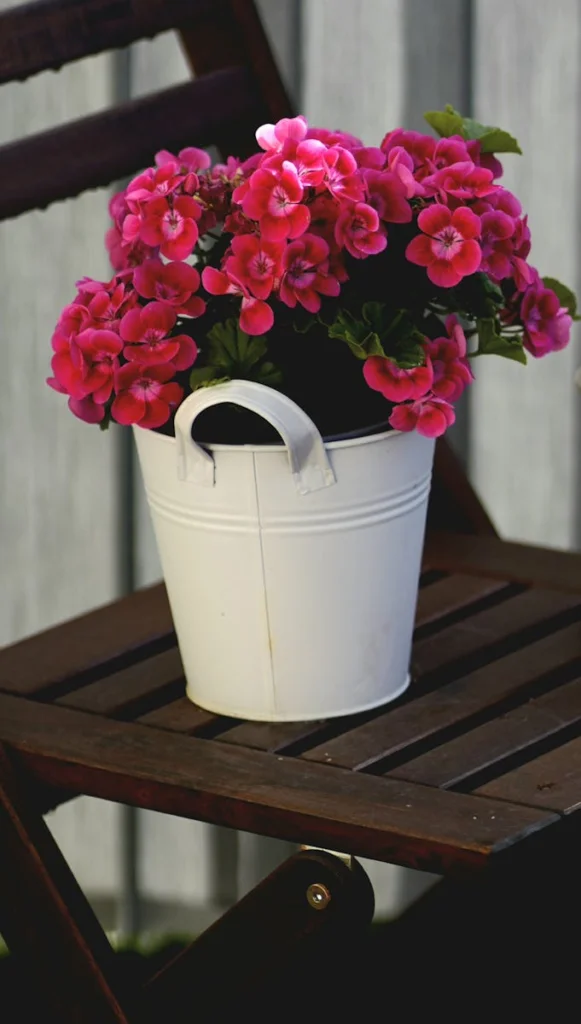
Native plants transform your outdoor space into a thriving ecosystem that practically maintains itself. You’ll slash your water bills while creating a powerful sanctuary that supports local wildlife and pollinators.
Your native plant selection gives you complete control over maintenance costs and environmental impact. These plants evolved in your region, so they’re naturally equipped to handle local weather patterns without constant intervention.
Here’s what you’ll gain from your drought tolerant garden:
- Reduced water usage – Cut irrigation needs by 50-75% compared to non-native landscaping
- Lower maintenance costs – Save $200-500 annually on fertilizers, pesticides, and replacements
- Increased property value – Boost curb appeal with authentic, region-appropriate landscaping
- Wildlife habitat creation – Attract beneficial insects, birds, and butterflies naturally
You’re investing in a self-sustaining system that works harder while you work less.
Buy Secondhand Items Before Purchasing New
Before you click “add to cart” on that brand-new item, you’ll discover incredible treasures waiting in secondhand markets that cost a fraction of retail prices. You’re making a powerful environmental statement while saving serious money. Thrift stores, estate sales, and online marketplaces offer amazing finds that reduce manufacturing demand and keep items out of landfills.
When you buy used furniture, you’re often getting higher-quality pieces built to last decades longer than modern alternatives. That vintage dresser costs $50 instead of $300 new! You’re also supporting local businesses and charities.
Complete the cycle by making space first. Donate unused items cluttering your home to make room for your secondhand discoveries. You’ll create a sustainable lifestyle that’s both budget-friendly and environmentally responsible.
Reduce Meat Consumption With Plant-Based Meals
While you don’t need to eliminate meat entirely, cutting back just two days per week creates a meaningful impact on both the planet and your wallet. Flexitarian meal planning puts you in control of your food choices while reducing your environmental footprint.
Small dietary changes create big results—flexitarian eating empowers your choices while protecting the environment and your budget.
Start with simple swaps that don’t sacrifice flavor or satisfaction. You’ll discover that plant-based meals can be just as hearty and delicious as traditional meat dishes.
- Monday and Wednesday meatless days – Choose consistent days to build the habit
- Batch cook grains and legumes – Prepare quinoa, lentils, and beans in advance
- Incorporate meat alternatives – Try beyond burgers, tempeh, or mushroom-based proteins
- Focus on protein-rich combinations – Pair rice with beans or nuts with seeds
This strategic approach saves you $30-50 monthly while expanding your culinary skills.
Fix Leaky Faucets and Running Toilets Immediately
Water leaks waste thousands of gallons yearly and can increase your utility bills by $35 or more each month. You don’t need expensive plumber visits when you can spot common leak signs like dripping sounds, water stains, or toilets that won’t stop running.
Learning a few simple repair techniques will save you money while protecting this precious resource!
Detect Water Leak Signs
Although leaky faucets might seem like minor annoyances, they’re actually silent budget drains that waste thousands of gallons yearly. You hold the power to catch these water thieves before they devastate your bills and harm the environment.
Take control by implementing these detection strategies:
- Monitor water meter readings weekly when no water’s running throughout your home
- Check for discolored walls, ceiling stains, or warped flooring near plumbing fixtures
- Listen for unusual sounds like dripping, running water, or gurgling from pipes
- Inspect your water bill for unexplained usage spikes compared to previous months
You’ll save hundreds of dollars annually while protecting precious water resources. Early detection transforms you from victim to victor, giving you the upper hand against wasteful leaks that threaten your financial goals and environmental impact.
Simple DIY Repair Steps
Once you’ve spotted those sneaky leaks, you can tackle most common faucet and toilet repairs yourself with basic tools and thirty minutes of your time. These simple diy repairs save you $100-300 in plumber fees while preventing hundreds of gallons of daily waste.
For dripping faucets, turn off the water supply and replace worn washers or O-rings—they cost under $5 at any hardware store. Running toilets usually need a new flapper valve or chain adjustment. These easy diy fixes require only a screwdriver and pliers.
You’ll find step-by-step videos online for your specific fixture model. Don’t let minor leaks intimidate you! Taking control of these repairs puts money back in your pocket while protecting our planet’s precious water resources.
Use Cold Water for Most Laundry Loads
When you switch to cold water for washing your clothes, you’ll cut your energy use by up to 90% per load. This simple change puts real money back in your pocket while reducing your environmental impact. Modern detergents work effectively in cold temperatures, so you won’t sacrifice cleanliness for savings.
You’ll gain even more control over your energy consumption when you:
- Wash in cold water frequently to save $60-100 annually on utility bills
- Air dry clothes regularly instead of using your energy-hungry dryer
- Choose eco-friendly detergents specifically designed for cold water washing
- Wash full loads to maximize efficiency and minimize water waste
These small adjustments give you the power to slash your household’s carbon footprint without compromising your lifestyle or clothing quality.
Recycle Electronics and Batteries at Proper Facilities
Your old phones, laptops, and batteries contain valuable materials that can be recovered and reused instead of ending up in landfills. You’re taking control of environmental impact when you properly dispose of these items at specialized recycling centers.
| Item Type | Where to Recycle | What Happens |
|---|---|---|
| Smartphones | Best Buy, carrier stores | Gold, silver extracted |
| Laptops | Staples, manufacturer programs | Components refurbished |
| Tablets | Office Depot, local e-waste events | Metals recovered |
| Old TVs | Municipal collection sites | Lead safely removed |
| Gaming systems | GameStop trade-in programs | Parts reused |
You can donate old electronics to schools or nonprofits if they’re still functional. Always recycle rechargeable batteries at designated drop-off points – they contain lithium and cobalt that shouldn’t contaminate soil. Many retailers offer free collection bins for your convenience!
Conclusion
Starting your green journey doesn’t require dramatic lifestyle changes. Like planting seeds in a garden, these small eco-friendly habits will grow into meaningful environmental impact over time. You’ll save money on energy bills while protecting the planet for future generations. Pick two or three tips that feel manageable today, then gradually add more sustainable practices. Every positive change you make matters, no matter how small it seems!




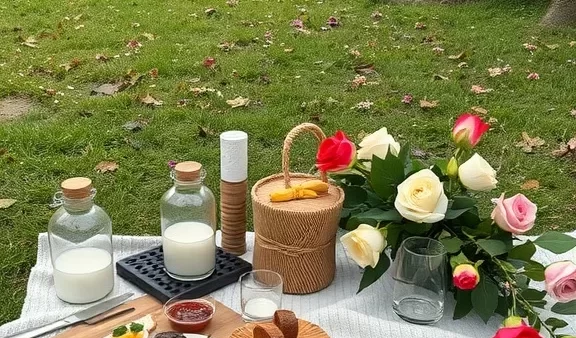
Leave a Reply